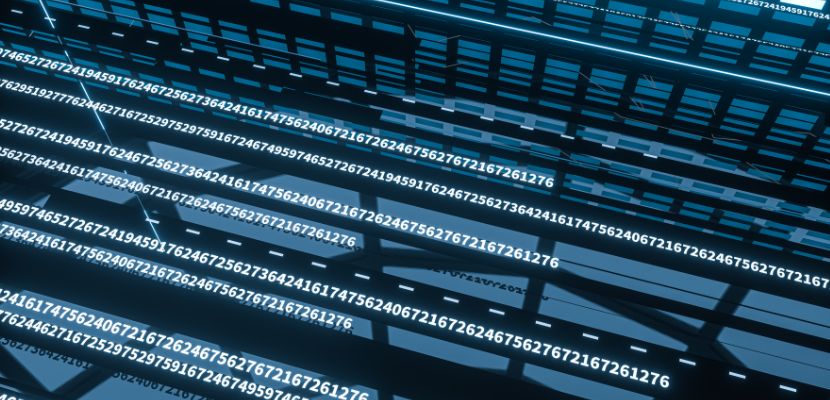The confidentiality, integrity, and availability (CIA) triad is a fundamental model in cybersecurity that defines the core principles for protecting information.

What Is the Confidentiality, Integrity, and Availability (CIA) Triad?
Confidentiality, integrity, and availability (CIA) form the foundational principles of information security, guiding the protection of data and systems from unauthorized access, alterations, and disruptions.
What Is Confidentiality?
Confidentiality ensures that sensitive information is accessible only to those with proper authorization, using measures such as encryption, access controls, and authentication mechanisms to prevent unauthorized disclosure. Together, these principles provide a comprehensive framework for securing information and ensuring the reliability of digital systems.
What Is Integrity?
Integrity focuses on maintaining the accuracy, consistency, and trustworthiness of data throughout its lifecycle, protecting it from unauthorized modification, corruption, or destruction through mechanisms like checksums, hashing, and version control.
What Is Availability?
Availability guarantees that systems, networks, and data remain accessible and operational whenever needed, mitigating potential disruptions caused by cyber attacks, hardware failures, or natural disasters through redundancy, failover mechanisms, and robust infrastructure management.
Why Is the CIA Triad Important?
The CIA triad is important because it provides a structured approach to safeguarding information, ensuring that security measures address the most critical aspects of data protection.
By maintaining confidentiality, organizations prevent unauthorized access to sensitive information, reducing the risk of data breaches and privacy violations. Integrity ensures that data remains accurate and unaltered by unauthorized entities, preserving trust in financial transactions, medical records, and other critical systems. Availability ensures that systems and data remain accessible when needed, preventing disruptions that could impact business operations, public services, or critical infrastructure.
The triad serves as the foundation for cybersecurity policies, compliance requirements, and risk management strategies, helping organizations mitigate threats, protect stakeholders, and maintain operational resilience.
How to Ensure the Protection of the CIA Triad?

Ensuring the protection of the CIA triad requires a combination of technical controls, policies, and best practices tailored to mitigate risks across different attack vectors.
Confidentiality is safeguarded through encryption, access controls, multi-factor authentication (MFA), and strict identity and access management (IAM) policies. Data classification and security awareness training also play a crucial role in preventing unauthorized access and accidental disclosures.
Integrity is maintained using cryptographic hashing, digital signatures, checksums, and data validation techniques to detect and prevent unauthorized modifications. Regular audits, version control systems, and security policies help ensure that data remains accurate and unaltered.
Availability is ensured by implementing redundancy, load balancing, failover mechanisms, and disaster recovery plans. Regular system maintenance, patch management, and distributed denial-of-service (DDoS) protection further enhance system reliability and minimize downtime.
CIA Triad Benefits and Challenges
Understanding the benefits and challenges of the CIA triad is essential for building a resilient security framework.
CIA Benefits
The CIA triad serves as the foundation of cybersecurity, helping organizations protect sensitive data, ensure system reliability, and maintain trust. By implementing strong security measures based on these principles, businesses can reduce risks, improve compliance, and enhance operational resilience. CIA benefits include:
- Protection against unauthorized access. Confidentiality measures such as encryption, access controls, and authentication mechanisms help prevent unauthorized users from accessing sensitive data. This reduces the risk of data breaches, identity theft, and insider threats.
- Ensuring data accuracy and trustworthiness. Integrity mechanisms, including cryptographic hashing, checksums, and version control, ensure that data remains unaltered and reliable. This is critical in sectors like finance, healthcare, and legal services, where accurate information is essential for decision-making.
- Minimizing system downtime and disruptions. Availability strategies, such as redundancy, load balancing, and disaster recovery plans, ensure that data and systems remain accessible even in the face of cyber attacks, hardware failures, or natural disasters. This helps organizations maintain productivity and service continuity.
- Regulatory compliance and legal protection. Many industries must comply with data protection regulations like GDPR, HIPAA, or ISO 27001. The CIA triad helps organizations meet these requirements by enforcing strict security controls, reducing the risk of fines and legal consequences.
- Enhanced customer and stakeholder trust. A strong security framework built on the CIA triad reassures customers, partners, and stakeholders that their data is safe. This fosters trust, enhances reputation, and can provide a competitive advantage in industries where data security is a priority.
CIA Challenges
While the CIA triad provides a strong foundation for cybersecurity, implementing and maintaining it comes with several challenges. Below are the key challenges associated with each aspect of the CIA triad:
- Balancing security and usability. Strict security measures, such as multi-factor authentication, encryption, and access controls, enhance confidentiality and integrity but can sometimes hinder usability. Overly restrictive policies may lead to user frustration, increased downtime, or workarounds that create security gaps.
- Protecting against advanced threats. Cyber threats constantly evolve, making it difficult to maintain data confidentiality and integrity. Attackers use sophisticated techniques, such as phishing, ransomware, and insider threats, to bypass security controls, compromise data, and disrupt services.
- Ensuring continuous availability. Achieving high availability requires robust infrastructure, redundancy, and disaster recovery planning. However, unplanned outages caused by hardware failures, cyber attacks, or natural disasters can disrupt access to critical data and services, leading to financial and reputational damage.
- Managing compliance and regulatory requirements. Organizations must adhere to strict data protection laws, such as GDPR, HIPAA, and PCI-DSS. Ensuring compliance while maintaining security can be complex, especially when dealing with cross-border data transfers, industry-specific regulations, and evolving legal requirements.
- Preventing insider threats. Employees, contractors, or partners with legitimate access to systems can pose security risks, either intentionally or unintentionally. Weak access controls, lack of monitoring, and inadequate security awareness training can lead to data breaches and integrity issues.
- Handling resource constraints. Implementing strong security measures often requires significant investment in technology, personnel, and training. Smaller organizations may struggle to allocate resources for continuous monitoring, threat detection, and incident response, leaving them vulnerable to attacks.
- Addressing complexity in IT environments. Modern IT infrastructures are complex, spanning on-premises, cloud, and hybrid environments. Ensuring the CIA triad across multiple platforms, devices, and third-party integrations increases the risk of misconfigurations, security gaps, and compliance violations.
CIA Triad Best Practices
To effectively protect data and systems, organizations must implement CIA triad best practices. A well-rounded security strategy includes technical controls, policies, and proactive risk management. Below are key best practices for ensuring a strong security posture:
- Enforce compliance with regulatory standards. Align security practices with industry frameworks such as NIST, ISO 27001, GDPR, HIPAA, and PCI-DSS to ensure legal compliance and improve overall security posture.
- Implement strong access controls. Enforce role-based access control (RBAC) and the principle of least privilege (PoLP) to limit access to sensitive data and systems. Use multi-factor authentication to add an extra layer of security and prevent unauthorized access.
- Encrypt sensitive data. Use end-to-end encryption for data at rest, in transit, and in use to prevent unauthorized disclosure. Implement secure key management practices to protect encryption keys from exposure.
- Maintain data integrity with hashing and digital signatures. Ensure data integrity by using cryptographic hashing (e.g., SHA-256) and digital signatures to verify the authenticity of files, transactions, and communications. Implement version control systems to track and prevent unauthorized modifications.
- Regularly update and patch systems. Keep operating systems, software, and applications up to date to mitigate vulnerabilities. Apply automated patch management to ensure timely updates and reduce exposure to cyber threats.
- Use network security controls. Deploy firewalls, intrusion detection/prevention systems (IDS/IPS), and endpoint security solutions to monitor and protect network traffic. Implement zero-trust architecture (ZTA) to verify every access request, reducing the risk of unauthorized access.
- Ensure high availability and redundancy. Use load balancing, failover mechanisms, and data replication to maintain system availability. Implement backup and disaster recovery plans to ensure business continuity in case of system failures or cyber attacks.
- Conduct regular security audits and assessments. Perform penetration testing, vulnerability assessments, and compliance audits to identify weaknesses in security controls. Implement continuous monitoring and logging to detect anomalies and respond to threats in real time.
- Educate and train employees. Regularly train employees on security awareness, phishing prevention, and safe data handling practices. Foster a security-conscious culture to reduce human error and insider threats.
- Implement incident response and recovery plans. Develop a comprehensive incident response plan (IRP) to detect, contain, and recover from cyber incidents. Establish clear roles and responsibilities for incident management and conduct regular tabletop exercises to test response effectiveness.